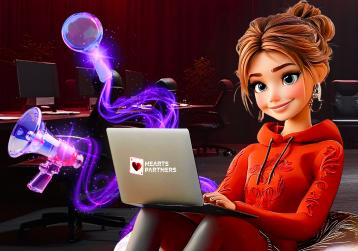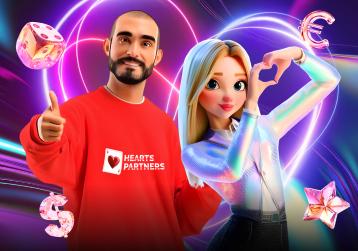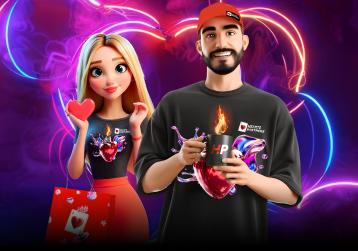How to Manage Chaos and Stay Human
As practice shows, creativity alone is no longer enough in modern marketing. Today’s CMO is a strategist, analyst, motivator, and leader simultaneously. How to build an effective marketing system? Which tools really work? And what sets a true expert apart from someone who’s just a busy person? We spoke with the CMO of one of the leading digital companies to get her take and find the answers.
Insider’s View
How do you juggle marketing, branding, PR, and operations? — A strong CMO isn’t a one-person band — they’re a system. Everything rests on clear structure, planning, and delegation. Operations are about processes. Branding is about values. PR is about engagement and relationships. The key is to stay focused on the user and the business outcome. For example, after implementing end-to-end analytics and syncing team workflows, we managed to accelerate campaign launches by 22%.
What’s Your Take on Omnichannel Strategy?
It’s just a must-have. But it’s not about “being present on every possible channel” — it’s about smart distribution. This approach helps avoid overwhelming the user while ensuring we still reach those who ignore traditional channels. We use a classic mix: messengers, email, social media, and push notifications. We always know where and how our customers prefer to receive information. That boosts LTV, reduces churn, and opens up more reactivation points — even for the most silent users.
What Trends Do You See in the Market?
Smart automation, generative AI, and first-party data-driven personalization. Also, a return to deep analytics and a growing role of content marketing focused on real value rather than just clickability. Sounds abstract? Let me explain:
Trend 1: Smart automation. It’s not just about autoresponders and static funnels anymore. We’re talking about adaptive communication flows. For example, suppose a user repeatedly clicks banners on a specific topic. In that case, the system automatically selects a relevant offer and delivers it via the channel with the highest engagement, whether push, email, or messenger. That helps lower touchpoint costs and increase conversion without raising budgets.
Trend 2: Generative AI. We already use AI to draft content, which is then reviewed by a specialist. This saves up to 40% of content creation time and helps us test hypotheses faster.
Trend 3: First-party data personalization. With the gradual phase-out of third-party cookies, the focus has shifted to owned data: in-product behavior, purchase history, and CRM interactions. With this data, we build precise segments and launch highly personalized campaigns.
Trend 4: Return to deep analytics. Today, it’s not about how many clicks a piece of content gets — it’s about what value it delivers, and how it affects retention and loyalty. We’re investing more in expert-driven content, research, and long-read texts that are genuinely helpful. This approach strengthens the brand, reduces reliance on paid traffic, and boosts LTV.
How Can Someone Grow Into a CMO?
— You walk your path. There’s the way of the samurai, and then there’s the way of the marketer. The key difference is that we don’t just have a path, we have a goal. You have to make mistakes, get your hands dirty, build systems, and understand the business as it is, not just a part of your area. Mentorship and constant adaptation help. Everything is changing so fast, so we need to jump on the moving train.
What Do You Like and Dislike in Marketing?
— I love analytics and CRM, that’s where the real action is: data, behavior, hypotheses, and growth. And what I dislike is “marketing for the sake of marketing,” where there’s a lot of noise, and everyone looks busy, but nothing moves the needle.
What Makes a Truly Great Team?
A dream team is where everyone knows their role and value, and is ready to contribute ideas not just in marketing, but to the overall product vision. Where processes are well-oiled, and everyone is focused on results. Sounds simple, but there’s real power in that simplicity.
What Defines the Ideal Employee?
Curiosity. I mean genuine, unstoppable curiosity. Someone who asks questions, digs into the details, and isn’t afraid to say “I don’t know.” That’s not a weakness — it’s how growth starts. The second trait is a combination of responsibility and analytical thinking. A good specialist can make decisions and mistakes, act fast, and learn nonstop. They analyze their environment, track competitors and trends, and constantly grow their idea bank. If someone has curiosity, responsibility, and a research mindset, everything else can be taught.
What About Soft Skills?
They’re really important. If someone can’t explain their ideas or communicate effectively, they’ll slow the team down, rather than pushing it forward. You need to be able to lead, listen, and align. But lately I’ve noticed a trend: many candidates have strong soft skills but lack the hard ones, even after years in the field. Some say, “I’ve worked two years, now I want a huge salary of a couple of million.” Being friendly is great, but if you don’t know your tools and you’re not learning constantly, soft skills alone won’t save you. I believe in balance — you need both soft and hard skills.
What Actually Works to Build a Strong Online Brand?
A mix of valuable content, targeted PR, user engagement, and community-building. Not hype — consistency.
As we can see, good marketing isn’t just about ideas, creativity, messaging, or channels. It’s about people, processes, strategy, and systematic thinking. You have to deeply understand your customer and know exactly what to offer. Today, the user’s attention is more expensive than the ad budget. So, those who win are not the loudest, but the ones who listen best.




